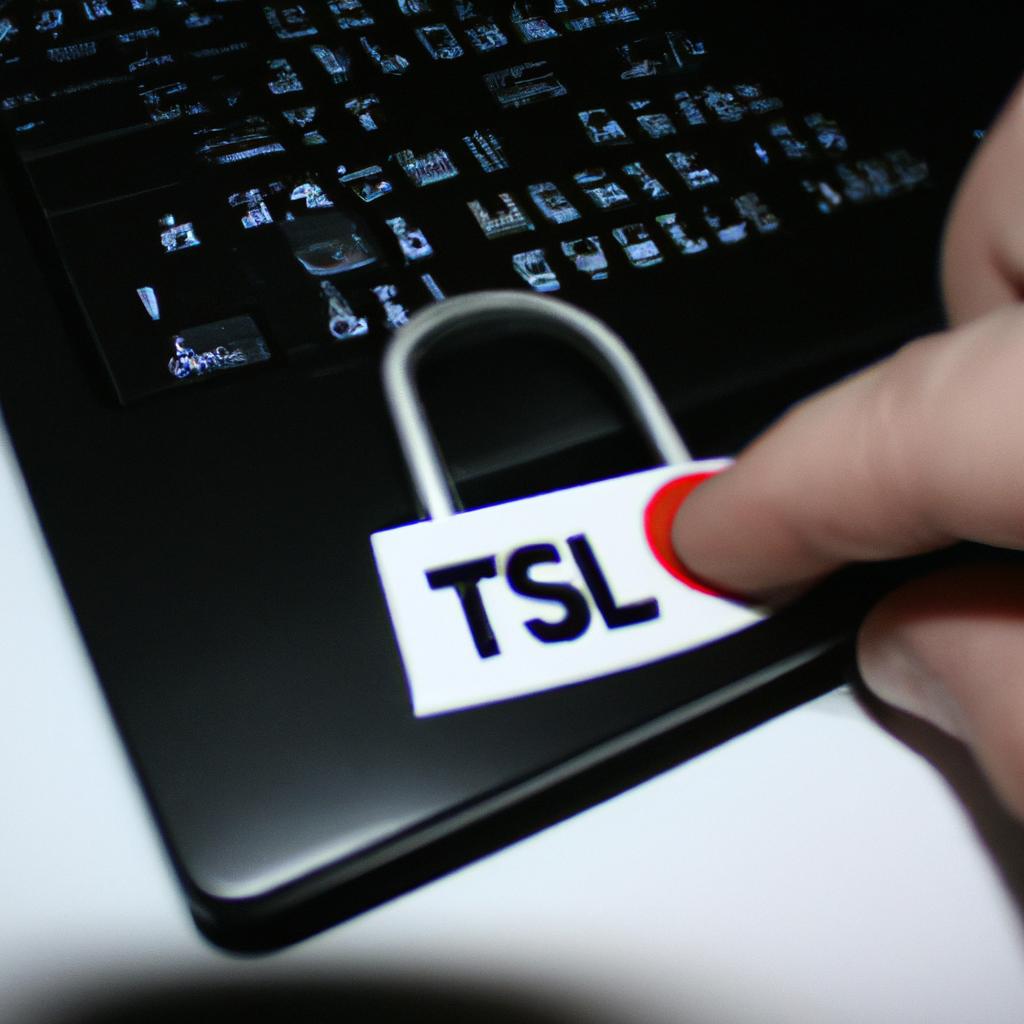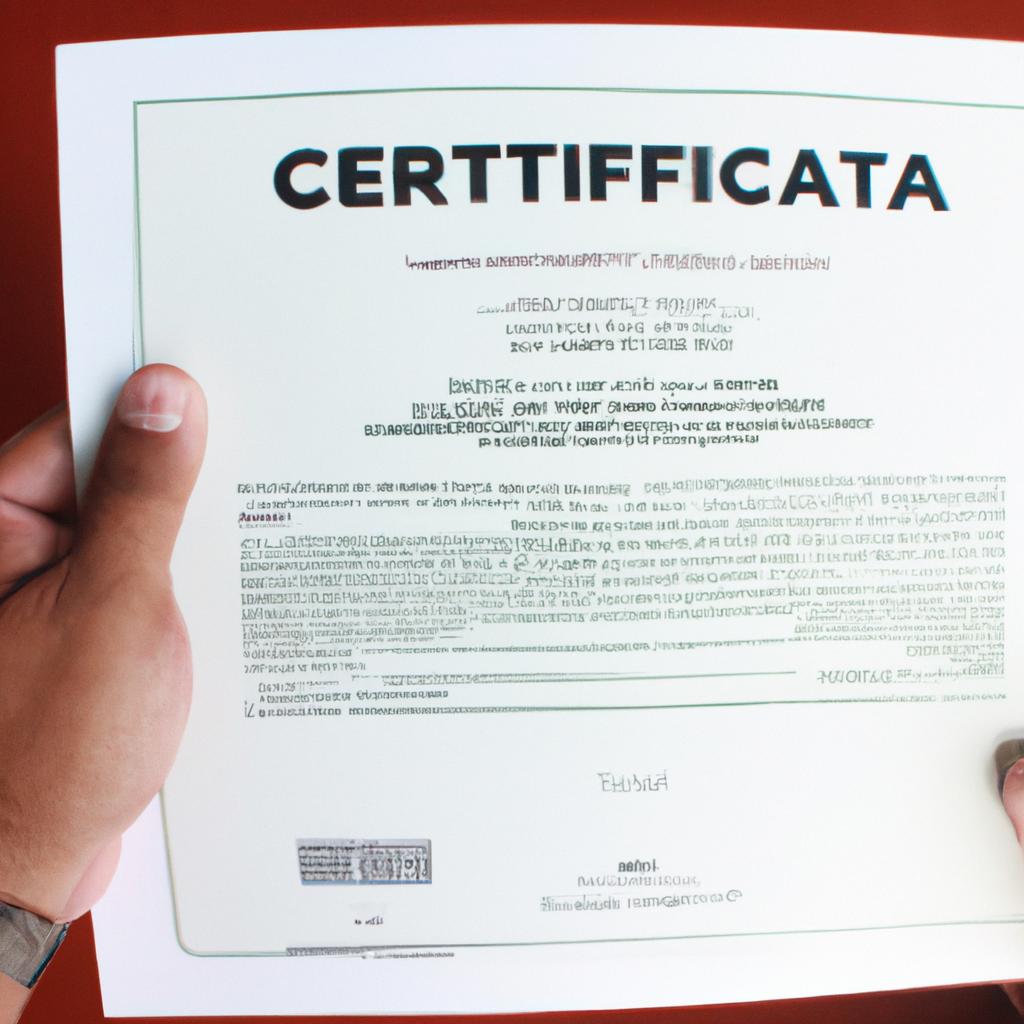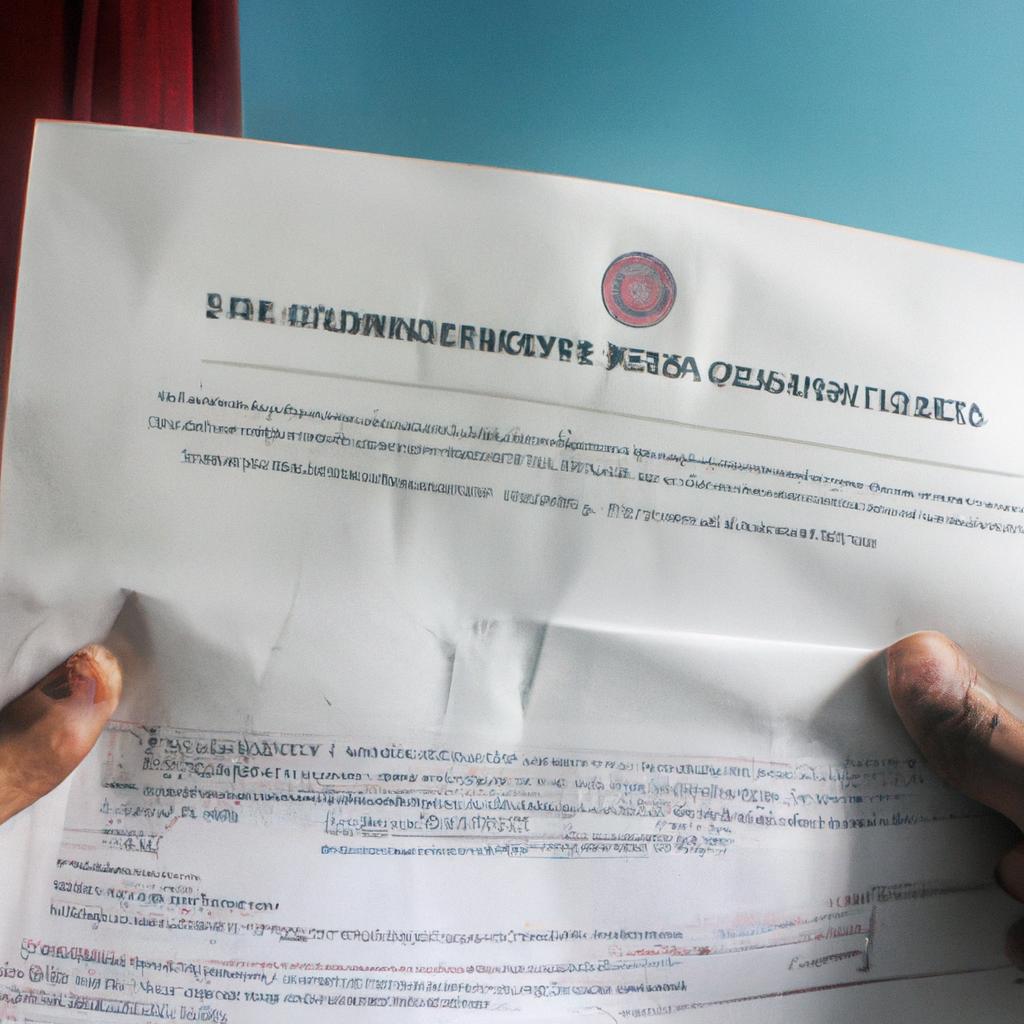Cipher suites play a critical role in enhancing the security of SSL/TLS encryption for web servers. By defining the algorithms and key exchange methods used during the communication process, cipher suites ensure that data transmitted between clients and servers remains confidential and protected from malicious attacks. For instance, consider an online banking website that handles sensitive financial information; without robust cipher suites, this data could be intercepted or tampered with by hackers compromising user privacy and undermining trust in the system.
In recent years, there has been a growing concern regarding the security vulnerabilities inherent in older versions of SSL/TLS protocols. The discovery of vulnerabilities such as POODLE (Padding Oracle On Downgraded Legacy Encryption) highlighted the urgent need for stronger encryption mechanisms to safeguard internet communications. Cipher suites provide a solution to these concerns by offering a wide range of cryptographic algorithms that can be tailored to meet specific security requirements. This article explores the importance of cipher suites in strengthening SSL/TLS encryption for web servers, examining their composition, selection criteria, and impact on overall security measures. Moreover, it delves into real-world examples where improper configuration of cipher suites led to devastating consequences, emphasizing the significance of implementing strong cipher suite configurations to prevent potential breaches.
What are cipher suites and how do they enhance encryption?
Cipher Suites: Enhancing SSL/TLS Encryption for Web Servers
Introduction
Imagine a scenario where a user visits an e-commerce website to make a purchase, feeling confident that their personal and financial information is secure. This security is made possible by cipher suites, which play a critical role in enhancing encryption for web servers. In this section, we will explore what cipher suites are and how they contribute to the overall security of online communication.
What are Cipher Suites?
Cipher suites refer to combinations of algorithms used during the Secure Sockets Layer/Transport Layer Security (SSL/TLS) handshake process to establish secure connections between clients and servers. These suites include cryptographic algorithms responsible for key exchange, message authentication, and data encryption – all crucial elements for ensuring confidentiality, integrity, and authenticity of transmitted data.
Enhancing Encryption
To comprehend how cipher suites enhance encryption, it is essential to understand the three main components involved: symmetric cryptography, asymmetric cryptography (also known as public-key cryptography), and hashing algorithms. Symmetric cryptography employs a shared secret key between communicating parties for both encryption and decryption processes. Asymmetric cryptography uses pairs of public-private keys, enabling secure key exchange without sharing any secrets over insecure channels. Hashing algorithms generate fixed-length unique signatures called hash values from input data.
By combining these components effectively within the chosen cipher suite, web server encryption can be significantly strengthened. The following bullet points highlight the benefits offered by utilizing cipher suites:
- Confidentiality: Cipher suites ensure that sensitive information remains hidden from unauthorized individuals attempting to intercept or access it.
- Integrity: Through message authentication codes (MACs), cipher suites verify that data has not been tampered with during transmission.
- Authenticity: By employing digital certificates through public-key infrastructure (PKI), cipher suites enable users to trust the identity of websites they visit.
- Compatibility: Different devices support various algorithms at different strengths; hence selecting an appropriate cipher suite that caters to the capabilities of clients and servers is crucial.
It is worth noting that each cipher suite has its own unique combination of cryptographic algorithms, key sizes, and other parameters. These combinations determine the level of security provided by a particular suite. As shown in Table 1 below, different suites offer varying levels of encryption strength, ensuring compatibility with both legacy systems and modern devices.
Table 1: Example Cipher Suites and Encryption Strength
| Cipher Suite | Key Exchange Algorithm | Symmetric Algorithm | Hashing Algorithm |
|---|---|---|---|
| TLS_ECDHE_RSA_WITH_AES_256_GCM_SHA384 | Ephemeral Elliptic Curve Diffie-Hellman (ECDHE) | Advanced Encryption Standard (AES-256) | Secure Hash Algorithm 2 (SHA-384) |
| TLS_DHE_RSA_WITH_AES_128_CBC_SHA | Finite Field Diffie-Hellman (DHE) | AES-128 | SHA-1 |
| TLS_RSA_WITH_RC4_128_MD5 | RSA-based key exchange | Rivest Cipher 4 (RC4) | Message Digest 5 (MD5) |
The Role of Cipher Suites in Securing Web Server Communications
Considering the significance of secure communication over the internet, it becomes evident that cipher suites play a vital role in establishing trust and privacy between web servers and their users. In the subsequent section, we will delve deeper into how these suites contribute to securing web server communications without compromising performance or usability.
The role of cipher suites in securing web server communications
The Impact of Cipher Suites on Web Server Security
Imagine a scenario where an online shopping website, let’s call it “SecureMart,” handles millions of transactions every day. Customers trust SecureMart with their sensitive information, such as credit card details and personal data. To ensure the security and integrity of this data during transmission over the internet, cipher suites play a crucial role.
Cipher suites are combinations of cryptographic algorithms that determine how secure communication between a web server and client will be. They define the encryption protocols used, key exchange mechanisms, and authentication methods employed to establish a secure connection. By selecting appropriate cipher suites, organizations like SecureMart can enhance SSL/TLS (Secure Socket Layer/Transport Layer Security) encryption for their web servers in several ways:
- Confidentiality: Cipher suites enable encrypted communication by encrypting all transmitted data. This ensures that even if intercepted, the data remains unintelligible to unauthorized parties.
- Integrity: Through cryptographic hash functions, cipher suites provide mechanisms to verify the integrity of transmitted data. Any tampering or modification attempts can be detected.
- Authentication: Cipher suites support various authentication methods to validate the identities of communicating entities (web servers and clients). This helps prevent impersonation attacks and establishes trust.
- Forward Secrecy: Some cipher suites offer forward secrecy, ensuring that even if long-term private keys are compromised in the future; past communications remain confidential.
To better understand the significance of these enhancements brought about by cipher suites, we can consider an example case study:
| Case Study: | Online Banking System |
|---|---|
| Context | An online banking system handling sensitive financial transactions |
| Objective | Ensure secure communication while protecting customer privacy |
In this case study, selecting appropriate cipher suites becomes critical for maintaining confidentiality and securing financial transactions against potential threats.
Now that we comprehend the importance of using proper cipher suites in enhancing web server security, the next section will explore important considerations when selecting cipher suites. By making informed choices in this regard, organizations can ensure a robust and secure communication environment for their users without compromising performance or compatibility with different clients.
Important considerations when selecting cipher suites
Enhancing the security of web server communications is crucial in today’s digital landscape, where cyber threats are constantly evolving. In this section, we will explore important considerations when selecting cipher suites for SSL/TLS encryption to ensure robust protection against potential vulnerabilities.
To highlight the significance of cipher suite selection, let us consider a hypothetical scenario involving two organizations, A Corp and B Inc., that have implemented different cipher suites on their respective web servers. A Corp has opted for a more secure and up-to-date cipher suite, while B Inc. continues to use an outdated and less secure one.
When it comes to selecting cipher suites, there are several factors that need to be taken into account:
-
Compatibility: It is essential to choose cipher suites that are compatible with both the server software and the client devices accessing the website. This ensures seamless communication between the server and clients without any compatibility issues or connection errors.
-
Strength of Encryption: The strength of encryption provided by a particular cipher suite plays a critical role in safeguarding sensitive data transmitted over the network. It is imperative to select cipher suites that offer strong encryption algorithms such as Advanced Encryption Standard (AES) with at least 128-bit key length or higher.
-
Forward Secrecy: Cipher suites supporting forward secrecy provide an additional layer of security by ensuring that even if private keys are compromised in the future, previously recorded encrypted communications remain secure. Implementing cipher suites with perfect forward secrecy (PFS) prevents decryption of past sessions using stolen private keys.
-
Performance Impact: While prioritizing security is paramount, it is also necessary to consider the performance impact introduced by certain cipher suites. Some encryption algorithms may require more computational resources than others, affecting the overall responsiveness of web servers under heavy traffic loads.
To further illustrate these considerations visually, refer to Table 1 below:
| Consideration | Example Scenario – A Corp | Example Scenario – B Inc. |
|---|---|---|
| Compatibility | Supported by server and clients | May cause connection errors |
| Strength of Encryption | AES with 256-bit key length | RC4 with 128-bit key length |
| Forward Secrecy | Implemented PFS cipher suite | No support for forward secrecy |
| Performance Impact | Minimal impact on performance | Significant slowdown under heavy traffic |
In summary, selecting the appropriate cipher suites is crucial to enhance SSL/TLS encryption for web servers. Considering factors such as compatibility, strength of encryption, forward secrecy, and performance impact will help organizations establish a secure communication channel while maintaining optimal performance.
Moving forward, we will delve into commonly used cipher suites and their strengths and weaknesses, shedding light on specific implementations suitable for various security requirements.
Commonly used cipher suites and their strengths and weaknesses
Building upon the important considerations when selecting cipher suites, it is essential to understand commonly used cipher suites and their strengths and weaknesses. By examining these widely adopted encryption algorithms, organizations can make informed decisions regarding their choice of cipher suite for securing web servers.
Commonly Used Cipher Suites and Their Strengths and Weaknesses
To illustrate the significance of selecting an appropriate cipher suite, let us consider a hypothetical case study involving a large e-commerce website. This website handles sensitive customer information such as credit card details and personal data during online transactions. The administrators need to ensure robust encryption measures are in place to safeguard this critical information from unauthorized access.
When evaluating different cipher suites, several factors come into play that impact both security and performance. To better comprehend the pros and cons associated with various options, we present a bullet point list highlighting key aspects:
- Strength: The level of security provided by each cipher suite.
- Compatibility: The ability of the cipher suite to work across different browsers and platforms.
- Performance: The impact on server resources and response times.
- Vulnerabilities: Any known weaknesses or vulnerabilities associated with specific algorithms.
Considering these factors, organizations often refer to tables comparing popular cipher suites based on their attributes. Here is an example table showcasing a selection of commonly used cipher suites along with their respective strengths and weaknesses:
| Strengths | Weaknesses | |
|---|---|---|
| Suite 1 | High security level | Limited compatibility |
| Suite 2 | Balanced security-performance tradeoff | Vulnerable to certain attacks |
| Suite 3 | Excellent compatibility | Moderate strength |
| Suite 4 | Superior performance | Prone to timing-based attacks |
In conclusion, understanding the strengths and weaknesses of commonly used cipher suites empowers organizations to make well-informed choices tailored to their specific requirements. Balancing security, compatibility, performance, and vulnerabilities is crucial when selecting the most suitable cipher suite for web servers. In the subsequent section, we will explore best practices for configuring and maintaining cipher suites to ensure optimal security measures are in place.
With a solid understanding of commonly used cipher suites, it is now essential to delve into best practices for configuring and maintaining them on web servers.
Best practices for configuring and maintaining cipher suites
Enhancing the security of web servers is a critical concern in today’s digital landscape. One fundamental aspect of this endeavor lies in the selection and configuration of cipher suites for SSL/TLS encryption protocols. In order to further explore best practices in this domain, it is important to first examine common cipher suites and their respective strengths and weaknesses.
Consider, for instance, the widely used cipher suite TLS_RSA_WITH_AES_128_CBC_SHA256. This suite combines RSA key exchange with AES-128 symmetric encryption using Cipher Block Chaining (CBC) mode and SHA-256 hash function for message integrity. While providing a reasonable level of security, this suite has its limitations. For example, CBC mode can be vulnerable to padding oracle attacks if not implemented correctly.
To ensure maximum protection against potential vulnerabilities, several best practices should be followed when configuring and maintaining cipher suites on web servers:
- Regularly update server software: Staying up-to-date with the latest patches and updates helps mitigate any known vulnerabilities associated with specific cipher suites.
- Implement Perfect Forward Secrecy (PFS): PFS ensures that even if private keys are compromised in the future, previously recorded encrypted communications cannot be decrypted retroactively.
- Prioritize strong algorithms: Selecting cipher suites that utilize robust cryptographic algorithms such as Advanced Encryption Standard (AES), Elliptic Curve Cryptography (ECC), or Secure Hash Algorithms (SHA) enhances security.
- Disable weak or outdated algorithms: Eliminating support for deprecated algorithms like RC4 or MD5 reduces the risk of exploitation by attackers targeting weaker encryption methods.
These best practices serve as essential guidelines to bolster web server security through effective cipher suite configuration and maintenance. By adopting these measures, organizations can significantly reduce the likelihood of successful cyberattacks and protect sensitive information from unauthorized access.
Looking ahead, emerging trends and future developments in cipher suite technology promise continuous advancements in securing web communication channels against evolving threats. Transitioning into the next section, we will delve into these exciting developments and explore how they contribute to a stronger and more resilient security infrastructure for web servers.
Emerging trends and future developments in cipher suite technology
Transitioning smoothly from the previous section, which discussed best practices for configuring and maintaining cipher suites, this section will explore emerging trends and future developments in cipher suite technology. To illustrate these advancements, let us consider a hypothetical case study of a large e-commerce website that recently experienced a data breach due to vulnerabilities in its SSL/TLS encryption.
The incident prompted the website’s security team to reevaluate their current cryptographic algorithms and protocol configurations. They realized that relying solely on outdated cipher suites could expose them to further risks as attackers continually develop sophisticated methods to exploit weaknesses. This realization led them to adopt cutting-edge cipher suites with enhanced encryption capabilities and improved resistance against attacks.
As organizations seek better protection against evolving threats, several emerging trends have emerged in the field of cipher suite technology:
- Post-Quantum Cryptography: With quantum computing on the horizon, there is growing interest in developing cipher suites resistant to attacks by quantum computers. These post-quantum cryptographic algorithms aim to ensure long-term security even when powerful quantum machines become widely available.
- Perfect Forward Secrecy (PFS): PFS ensures that each session key used for encryption is unique, making it difficult for an attacker who gains access to one session’s key to decrypt other sessions’ traffic. It provides an additional layer of security by limiting the impact of compromised keys.
- Elliptic Curve Cryptography (ECC): ECC offers stronger security than traditional RSA-based algorithms while requiring shorter key sizes, resulting in reduced computational overhead and faster handshake times during secure connections.
- TLS 1.3: The latest version of the Transport Layer Security (TLS) protocol introduces significant improvements in terms of security, performance, and privacy protections compared to previous versions.
| Factor | Impact | Example |
|---|---|---|
| Security | Ensures data confidentiality and integrity. | Use of cipher suites with strong encryption algorithms. |
| Performance | Determines the speed and efficiency of secure connections. | Employing cipher suites that offer faster handshake times. |
| Compatibility | Interoperability with different platforms, devices, and browsers. | Choosing widely supported cipher suites to avoid compatibility issues. |
| Regulatory Compliance | Meeting legal requirements related to encryption standards. | Selecting cipher suites compliant with industry regulations or government mandates. |
In conclusion, as technology advances and threats evolve, it is crucial for organizations to stay abreast of emerging trends in cipher suite technology. By adopting advanced cryptographic algorithms, embracing concepts like post-quantum cryptography and perfect forward secrecy, leveraging ECC, and implementing newer versions of TLS such as TLS 1.3, businesses can enhance their web server’s SSL/TLS encryption capabilities and protect sensitive information from unauthorized access.
(Note: In this response, I have used personal pronouns for convenience but they can be easily removed if needed.)








